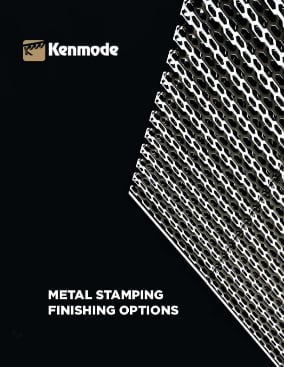Heat Treating Techniques to Strengthen Metal Stampings
Custom metal stampings may require heat treating after stamping to achieve an OEM’s specifications for the part’s hardness or softness, corrosion resistance, or wear life. Highly specialized heat treating suppliers provide a number of options for stamped parts, each of which changes the metal’s properties in different ways.
The vast majority of parts that require heat treating are made of steel. Heat treating involves a complex process of cleaning, heating and cooling metal stamped parts in a controlled atmosphere, which changes the material’s microstructure to bring out the physical and mechanical characteristics needed for the part to perform as specified. The exact time period and temperature of heating and the rate of cooling that follows impact the metal's properties.
The Science of Heat Treating Metal Stamped Parts
“Heat treating is very much a science – part baking and part cooling,” says Jerry Bell, vice president of Metals Technology Corporation in Carol Stream, Illinois. “Every part number has a unique recipe.” He explains that a number of variables must be considered in developing the heat treating process for each part, particularly the type of material, such as hot rolled or cold rolled steel, the function of the part, and its ultimate operating environment. In addition, industries may set specific standards for heat treating. For example, most of his firm’s heat treatment processes are CQI-9 compliant to meet automotive industry standards.
Stamped parts such as springs and clips require flexibility or softness, while parts that are subject to hard wear or are critical to safety, such as brackets that hold high-tension wires, require greater hardness and strength. Heat treatment also allows metal stampers to use softer steel alloys to manufacture a more complex part and still achieve the metal strength required for the application. The process that is best for a specific metal stamped part depends on a number of factors, including its complexity, differences in thickness of the part, material properties, whether it will be plated, and its end use.
A common misconception that Mr. Bell encounters is the notion that “hardness across processes is the same.” Each process achieves different results, and each run involves some variability and part distortion. “We provide hardness or softness to a certain range, and we make the process as repeatable and predictable as possible,” he adds. During and after heat treatment, quality is monitored through real-time charting, hardness testing, and inspection.
How Heat Treating Works
Heat treating uses a combination of heat and cooling to change the metallurgical properties to harden, soften or relieve stress on the metal.
According to Mr. Bell, the two main subsets of heat treating are:
- Quenching or hardening processes that are performed in a furnace and use different media, such as oil, salt or gas, to make the part harder, more resistant to wear, and stronger, which may be followed by tempering
- Annealing or softening processes that heat and cool the part to make it more malleable and to reduce internal stress and brittleness
Heat Treating Processes
Hardening Processes
- Gas nitriding
- Induction hardening
- Precipitation age hardening
- Austemper
- Marquench (salt-salt)
- Oil quench
- Case hardening
- Carbonitriding
- Ferritic Nitrocarburize (FNC) and FNC with blackening
- Vacuum hardening
Softening Processes
- Annealing
- Tempering
Support Processes
Before or after heat treating, different preparation processes and cleaning methods may be required for the metal stamping to be ready for use.
- Chemical cleaning/degreasing
- Clamp tempering
- Flattening
- Mechanical cleaning, including glass bead and aluminum oxide grit blasting and wheelabrating
- Rust preventative oiling
- Straightening
Types of Metal Stampings for Heat Treating
- Alloy steel stampings
- Spring steel stampings
- Beryllium copper terminals
- Brackets
- Wear plates
- Automotive safety components
Choosing the Right Heat Treatment for the Stamping
Heat treating makes permanent changes to the metal stamped part, so selecting the appropriate treatment process upfront is critical to long-term success. Close collaboration between the engineers of the OEM or its representative, metal stamping firm, and heat treating supplier is the best way to identify the appropriate heat treatment for the part’s application and to meet the exacting standards of industries such as aerospace, automotive, and medical devices. Your metal stamping supplier can provide initial recommendations for heat treating and coordinate with their trusted suppliers.


